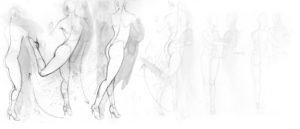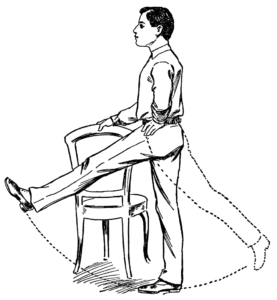In Argentine Tango we train our bodies to achieve an effortless rotation around our axis, this ‘task’ can take few hours of practice for some and perhaps years for others, however, what it is important is the value, attention and persistence we give to this essential part of our dancing practice.
What does need to happen in our physical body to achieve balance?
“Maintaining one’s balance is primarily coordinated by three systems. The first is the vestibular or auditory system, located in the inner ear, which acts like a “carpenter’s balance” to keep you level. The second balance system uses sensory nerves called proprioceptors that are located in the muscles, tendons, and joints. They give you awareness of your body’s position in a 3-dimensional space. And finally, there is the visual system, which sends signals from the eyes to the brain about your body’s position”. Bija Satterlee
Our body posture and alignment determine our ability to possess good vertical balance, the internal landscape of our bodies provides spaces and relationships between our core, the limbs and key sections of our anatomical structure. This physical approach is complemented by sensorial stimulus, emotions, intentions and imagery, growing these connections up-down and across the body are essential to begin understanding how our bodies achieve good balance in motion.
“All that is important is this one moment in movement. Make the moment important, vital, and worth living. Do not let it slip away unnoticed and unused.” ― Martha Graham
Balance is a lifetime achievement, it reflects the history of your body from childhood to adulthood and continues to develop differently as we grow older, therefore noticing small or big changes of our body shape and state of mind (and soul), is a good way to channel better our efforts and energy we spend in working out balance exercises and routines.
In the Argentine Tango balance is important for the individual dancer and for the dancing couple. Connecting two bodies to share one embrace presents great challenges to our bodies and our freedom of movement. This is a new experience and often described as a dance ‘conversation’ and we need to prepare for this, where both dancing bodies should aim to tune towards each other, be ready, listen and respond to space, time and body connection. A good individual body balance is fundamental to allow this conversation to take place in an enjoyable and well executed manner.
-Osvaldo Zotto and Lorena Ermocida teached and performed regularly at Corrientes Social Club in 1999-2000-2001 and 2002-
For anybody balance is a very important area of fitness (especially as we age) and there seems to be evidence to suggest regularly engaging in balance exercises can help you react quickly, prevent injuries and accidents. To challenge and improve your balance, next time you are doing an everyday chore, try standing on one leg, lifting the other knee for 30 seconds – then close your eyes and repeat . This will increase the challenge as you can no longer rely on vision as one of the primary systems to help you maintain balance.



